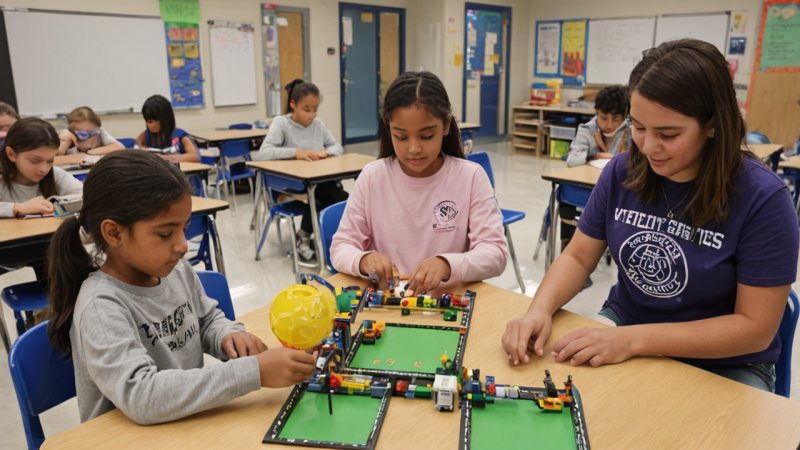In an increasingly complex and technology-driven world, the importance of STEM (Science, Technology, Engineering, and Mathematics) education cannot be overstated. However, the integration of literacy into STEM education is equally crucial for fostering critical thinking, problem-solving skills, and effective communication among students. By blending literacy with STEM subjects, educators can create a more holistic learning experience that prepares students for the challenges of the future. This article explores effective strategies for integrating literacy into STEM education, highlighting the benefits of such an approach and offering practical guidance for educators and community members alike.
The Importance of Literacy in STEM Education
Literacy is often perceived as the ability to read and write; however, in the context of STEM education, it encompasses much more. STEM literacy involves the ability to understand, critique, and communicate scientific and technical information. This form of literacy is essential for students to navigate and engage with the world around them, especially as they encounter complex issues such as environmental sustainability, health crises, and technological advancements.
Integrating literacy into STEM education empowers students to articulate their ideas, analyze data critically, and engage in informed discussions. It encourages them to not only consume information but also contribute to the creation of knowledge. Furthermore, with the rise of interdisciplinary fields, the ability to communicate effectively across various domains is paramount for future careers.
Strategies for Integration
To effectively integrate literacy into STEM education, educators can employ various strategies that promote engagement, critical thinking, and collaboration. Here are some key approaches:
1. Project-Based Learning
Project-based learning (PBL) encourages students to explore real-world problems through inquiry and research. By designing PBL units that require students to conduct research, analyze data, and present their findings, educators can seamlessly integrate literacy skills into STEM projects. For instance, students might investigate the impact of climate change on local ecosystems, requiring them to read scientific literature, write reports, and present their conclusions.
2. Use of Technology
Incorporating technology into STEM education offers innovative avenues for enhancing literacy. Digital tools such as blogs, podcasts, and online forums allow students to express their ideas creatively and engage with a wider audience. For example, students can create a podcast discussing their findings on renewable energy sources, which not only reinforces their understanding of STEM concepts but also hones their communication skills.
3. Interdisciplinary Collaboration
Collaborating with language arts teachers can provide a framework for integrating literacy into STEM curricula. Joint lesson planning can lead to the development of units that emphasize reading comprehension, writing skills, and critical analysis within a STEM context. For instance, a joint unit on engineering could involve students reading biographies of influential engineers, analyzing their contributions, and writing reflective essays on how these figures have shaped the field.
4. Reading and Writing in STEM
Encouraging students to engage with texts related to STEM subjects is vital for developing their literacy skills. This can include reading scientific articles, technical manuals, or even science fiction literature that explores futuristic technologies. Writing assignments can range from lab reports to opinion pieces on ethical dilemmas in science, allowing students to practice articulating their thoughts and arguments effectively.
5. Community Engagement
Connecting STEM education with community needs can further enhance literacy integration. Engaging students in community-based projects, such as conducting surveys or participating in local environmental initiatives, requires them to read, write, and communicate effectively with diverse audiences. This real-world application of literacy skills not only benefits the community but also reinforces students' learning experiences.
Benefits of Integrating Literacy into STEM Education
The integration of literacy into STEM education offers numerous benefits for students, educators, and communities. Some of these benefits include:
- Enhanced Critical Thinking: Students develop the ability to analyze information critically and make informed decisions.
- Improved Communication Skills: Students become proficient in expressing their ideas clearly and effectively.
- Increased Engagement: A holistic approach to learning fosters greater student interest and motivation in STEM subjects.
- Preparation for Future Careers: Students are better equipped to navigate the interdisciplinary nature of modern careers.
Conclusion
Integrating literacy into STEM education is not just an innovative teaching strategy; it is a necessity for preparing students for the complexities of the modern world. By employing project-based learning, leveraging technology, fostering interdisciplinary collaboration, and engaging with the community, educators can create a rich learning environment that emphasizes both STEM and literacy. As we move forward, it is crucial for educators, policymakers, and community members to recognize the importance of this integration and work together to cultivate a generation of informed, articulate, and capable individuals ready to tackle the challenges of the future.






